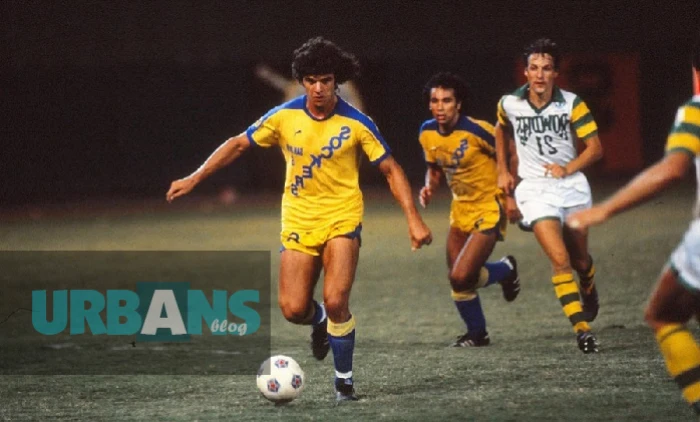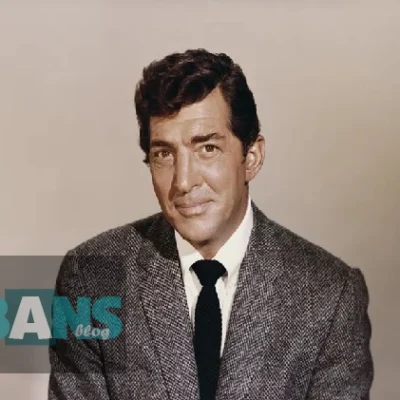Hugo Sanchez: Mexico’s Greatest Striker and Real Madrid Legend
Have you ever wondered what makes a soccer player truly legendary? Well, when it comes to Mexican football, one name stands above all others: Hugo Sánchez Márquez. This is the story of how a kid from Mexico City became one of the greatest strikers in soccer history.
Quick Bio: Hugo Sánchez
| Detail | Information |
|---|---|
| Full Name | Hugo Sánchez Márquez |
| Born | July 11, 1958 |
| Birthplace | Mexico City, Mexico |
| Height | 5 ft 9 in (1.75 m) |
| Playing Position | Striker |
| Notable Teams | • UNAM Pumas (1976-1981) • Atlético Madrid (1981-1985) • Real Madrid (1985-1992) |
| International Career | Mexican National Team (1977-1994) |
| Major Achievements | • 5× Pichichi Trophy Winner • 4× La Liga Champion • European Golden Boot (1990) • 29 goals in 58 matches for Mexico |
| Career Goals | 400+ professional goals |
| Famous For | • Bicycle kicks (chilenas) • Backflip goal celebrations • First Mexican soccer star in Europe |
| Post-Playing Career | Coach and Television Commentator |
The Early Years: From Mexico City to Soccer Stardom
Growing up in Mexico City during the 1960s, young Hugo Sánchez Márquez had big dreams. He spent countless hours kicking a ball around near his home, practicing moves that would later make him famous. But it wasn’t just natural talent that got him to the top. Hugo worked super hard, starting with the youth teams at UNAM Pumas.
The UNAM facilities became like a second home to Hugo. At the Estadio Olímpico Universitario, he began showing off the skills that would make him special. And boy, did people notice! His coaches couldn’t believe how good he was at scoring goals. Even as a teenager, Hugo had this amazing way of finding the back of the net.
Soon enough, Hugo became a star for UNAM Pumas in the Mexican Primera División. He wasn’t just scoring goals – he was scoring them in style! His bicycle kicks, or “chilenas” as they’re called in Spanish, made fans jump out of their seats. By the time he was done with Pumas, everyone knew: this kid was going places.
Breaking Ground in Spanish Football: The Atlético Madrid Era
Moving to Spain was a huge deal. In 1981, Hugo packed his bags and headed to Atlético Madrid. Some people wondered if a Mexican player could make it in the tough Spanish La Liga. But Hugo? He wasn’t worried one bit.
At the Vicente Calderón Stadium, Hugo showed everyone what Mexican soccer was all about. He had to adapt to a different style of play, sure. But his goal-scoring ability? That worked just fine in any country! The Atlético Madrid training ground became the place where Hugo perfected his craft.
During his time with Atlético, Hugo started collecting some serious achievements. He was scoring goals left and right, and Spanish football fans couldn’t get enough. Even Johan Cruyff, one of the greatest players ever, said Hugo was something special. That’s when Real Madrid started paying attention.
The Real Madrid Golden Years: Becoming a Legend
And then it happened. In 1985, Hugo Sánchez joined Real Madrid CF. The Santiago Bernabéu Stadium was about to witness something incredible. Playing alongside stars like Emilio Butragueño and Michel González, Hugo became unstoppable.
Here’s something amazing: Hugo won the Pichichi Trophy (top scorer award) FIVE times in a row! Nobody had ever done that before. They started calling him “Pentapichichi” because of this incredible achievement. His goal ratio was out of this world. We’re talking about someone who could score from anywhere, anytime.
The memories he created at Real Madrid are still talked about today. His partnership with players like Bernd Schuster led to countless goals and victories. La Liga championships? He won plenty. European Cup matches? He scored in those too. Hugo wasn’t just playing soccer – he was changing how people thought about the sport.
Revolutionary Goal-Scoring Techniques
What made Hugo Sánchez special wasn’t just how many goals he scored – it was how he scored them. His bicycle kicks were so amazing that people still watch videos of them today. When the ball went up in the air, everyone in the stadium would hold their breath. They knew what was coming: another incredible chilena from Hugo.
But that wasn’t all. Hugo was a penalty specialist who rarely missed from the spot. He had this special way of taking penalties that made goalkeepers really confused. And free kicks? He was an expert at those too. His attacking football style changed how people thought about striker position tactics.
And then there was his celebration! After scoring a goal, Hugo would do a backflip. Yes, a complete backflip! This goal celebration became famous all over the world. It showed how much joy he brought to the game, and fans loved him for it.
International Career: Mexico’s Soccer Ambassador
Playing for the Mexican National Team was super important to Hugo. He wore his country’s colors with pride at the Estadio Azteca and other famous stadiums around the world. The Mexican Football Federation knew they had someone really special representing them.
Hugo played in the 1986 World Cup, which was actually held in Mexico. Talk about pressure! But he handled it like a champ. Through CONCACAF competitions and international matches, he showed everyone that Mexican soccer could compete with the best.
His impact on Mexican football goes way beyond just scoring goals. He inspired tons of young players like Javier “Chicharito” Hernández to believe they could make it big too. Hugo proved that Mexican players could succeed anywhere in the world.
Statistical Analysis: The Numbers Behind the Legend
Let’s talk about just how good Hugo was. His goal-scoring records are pretty mind-blowing. In total, he scored over 400 professional goals! That’s like scoring every single game for years and years.
His trophy collection is impressive too. We’re talking about multiple La Liga championships, Copa del Rey victories, and even the European Golden Boot. The UEFA Cup saw plenty of Hugo’s goals as well. His career statistics show why he’s considered one of the best strikers ever.
For soccer analytics fans, Hugo’s numbers are fascinating. His goals per game ratio was incredible. And it wasn’t just about quantity – he scored all kinds of goals. Headers, volleys, penalties, free kicks – he could do it all!
Legacy and Influence on Modern Soccer
Hugo didn’t just play the game – he changed it. His attacking style influenced future generations of players. Even today, coaches use videos of his techniques to teach young strikers about goal scoring.
After retiring as a player, Hugo started a coaching career. He’s worked with different teams and shared his knowledge about playing style influence and training methodology. But maybe more importantly, he’s become a respected soccer education voice.
Today’s players still study his professional impact. Stars like Raúl González have talked about learning from watching Hugo play. His football evolution continues to inspire new generations.
Technical Innovation and Playing Style

What made Hugo’s playing style so unique? First, his header technique was amazing. He could jump really high and had perfect timing. Plus, his goal-scoring technique included some moves nobody else was doing.
His tactical contributions to soccer went beyond just scoring. He showed that center-forwards could do more than just wait for the ball. Hugo would move around, create spaces, and make it really hard for defenders to stop him.
His training methodologies were special too. Hugo believed in practicing specific moves over and over until they became perfect. Many of today’s soccer skills training programs use ideas that came from him.
Cultural Impact and Global Recognition
In Mexican sports culture, Hugo is more than just a football player – he’s a hero. He showed that Hispanic athletes could reach the very top of world soccer. As a cultural ambassador, he opened doors for others to follow.
His work as a television commentary expert has helped him share his knowledge with new fans. Through sports commentary and media presence, he helps people understand the game better. The Spanish Football Federation and FIFA have recognized his contributions many times.
Today, Hugo Sánchez remains a huge part of football history. His leadership influence goes beyond just playing. He’s helped with youth development and keeps pushing Mexican soccer forward. From Mexico City to Madrid and back, his story shows that with hard work and talent, anything is possible.
Conclusion
Hugo Sánchez wasn’t just a great soccer player – he was a revolutionary. His journey from the streets of Mexico City to the heights of European football shows what’s possible with dedication and skill. His influence on soccer history, especially Mexican soccer, can’t be measured just in goals or trophies.
Want to learn more about this amazing athlete? Check out his matches online, study his techniques, and see why he’s considered one of soccer’s greatest strikers. Whether you’re a young player dreaming of glory or just a fan of beautiful football, Hugo Sánchez’s story has something to teach all of us.
Remember: great athletes aren’t just born – they’re made through hard work, creativity, and passion. Hugo Sánchez proved that. Now it’s up to the next generation to take those lessons and create their own soccer legacy.
This article is brought to you by UrbansBlog, your trusted source for inspiring stories about soccer legends and the beautiful game. For more articles about legendary athletes who changed the sport forever, keep exploring UrbansBlog.





No Comment! Be the first one.